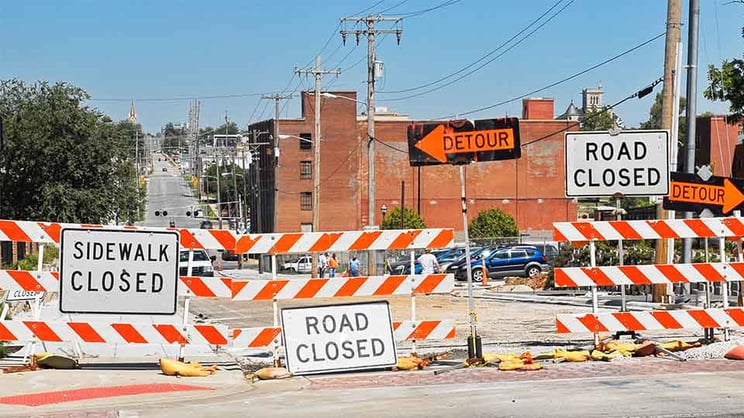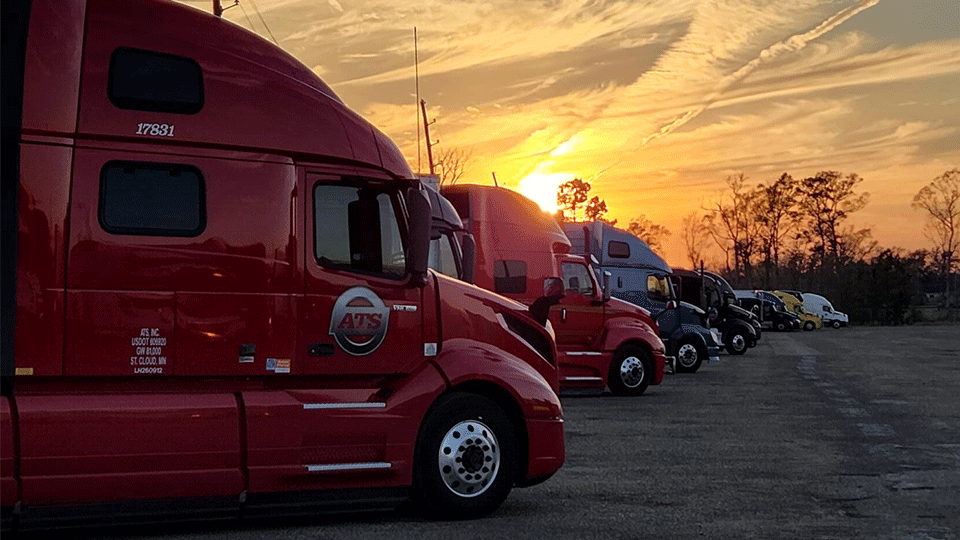In the United States, hurricane seasons lasts until the end of November, typically peaking between August and October. Hurricanes and other severe storms have multiple impacts on roads and supply chains.
And while many of us in land-locked states will never experience a hurricane directly, transportation and logistics is a nationwide industry. When one area experiences an extreme event, the impact is felt across the country (and beyond).
Regardless of your actual proximity to a hurricane, you are likely to feel the impact when it hits.
At Anderson Trucking Service, we have been around for more than 67 years of hurricane seasons and other severe weather events. Though our main headquarters is in the hurricane-safe zone of Minnesota, we work with shippers, weather officials and drivers nationwide.
If you are in the path of a hurricane, you need to worry about your own safety, as well as the safety of your loved ones and employees. We are here to worry about your freight when you can’t.
While severe storms are never fully predictable, you can plan ahead to help keep your freight moving during and after a hurricane event. In this article, you will learn how hurricanes impact the trucking industry and how to minimize disruptions to your business and supply chain.
The Impact to the Trucking Industry Before, During and After Hurricanes
The direct hit of a hurricane has both an immediate and long-lasting impact as repairs can take years or months – and sometimes, residents and employers may decide to relocate or build back using completely different infrastructure. While every storm is different, there are 3 common impacts before, during and after that you can prepare for.
1. Expect Traffic Jams and Delays Before the Hurricane Hits
When the storm is approaching, most people are trying to evacuate as quickly as possible. If your shipment is caught in this traffic, there will be inevitable delays. You will likely also have to pay higher prices to make it more appealing for drivers to drive to and from a region where a storm is predicted.

2. Road Closures Can Make Some Areas Inaccessible
After the storm, damaged roads may be completely shut down. This will cause inevitable delays and may make some areas inaccessible. Depending on the scope of the damage, even when main arteries reopen doesn’t mean the entire area is reachable, especially to large equipment.
When roads are opened to a limited capacity, this will mean higher prices, which serve to entice carriers and drivers to take the extra time needed to navigate the area.
3. Expect Supply Interruptions and Increases in Cost of Goods
Before and after the storm hits, you may see increases in the cost of items used to prepare for the storm (sandbags, bottled water, generators) or clean up (work gloves, tools, dumpsters). This is a direct example of demand on the supply chain causing a surge in pricing.
If you are not located in the storm-affected region, you may not see these items on store shelves as manufacturers redirect them to where they are needed most.
The best way to prepare for undisrupted access to these goods is to plan ahead. If you can gather and store these supplies before a storm approaches, it will eliminate one potential stressor.
4. Manufacturing Slow-Downs After the Storm
During the rebuilding process, many manufacturers will be running at less than full capacity. This phase can last for months or years.
This can have a two-fold impact on the price of your freight.
- If drivers have not yet returned to their usual routes, you are likely to pay higher prices for the same loads you were running before the storm.
- If drivers have returned but large manufacturers or local industries are still working at diminished capacity, there may be an abundance of drivers in your area looking for loads. This may actually lower prices as they are vying for limited trips.
How to Minimize Disruptions to Shipments During Hurricane Season
As a shipper, now is the time to prepare for hurricane season. If you are located in a hurricane-prone area or regularly ship to and from those areas, this is definitely a case where an ounce of prevention is worth a pound of cure. Take a look now at your facilities and your assets, and evaluate how you can keep them protected.
Move Freight Out of Hurricane-Impacted Areas
If you have an offsite warehouse or facility in a less-impacted area, moving your freight to that location is one way to keep it safe from a hurricane. This will help you avoid the rush right before the storm, and ensures that if you are forced to work at reduced capacity or experience supply chain disruptions after the storm you will have stock readily available to fill orders while you work on ramping back up to full capacity.

Be Flexible When Arranging Shipments Before the Storm
In the rush to get people and possessions out of the path of the storm, you may need to be flexible when you are specifying loads. If you are able to adjust the type of trailer needed, the timeline or even destination, you may be better able to find a truck and driver.
Check Your Insurance Coverage
Carriers are required to hold insurance for freight in their care as well as for their own equipment. That coverage typically maxes out at around $100,000 – and it may exclude coverage for extraordinary events such as hurricanes.
If you are concerned that your cargo will not be covered by the carrier’s insurance, now is the time to investigate supplemental insurance. The time to purchase insurance is when you don’t need it, and that includes cargo insurance.
Don’t Get Your Freight Caught in a Hurricane
When a hurricane is imminent, you need to worry about the safety of yourself, your loved ones and your valuable possessions. The last thing you want to worry about is shipping freight. Whether or not you are personally located in a hurricane-prone area, now is your chance to prepare.
Understanding the impact that hurricanes can have across the transportation and logistics industry is one step in preparing for the possibility. Now that you have a basic framework of the necessary steps, how can you start preparing your business and your freight for a potential hurricane?
If you are looking for an experienced logistics partner who can help during hurricane season and beyond, contact us to Request a Quote.

